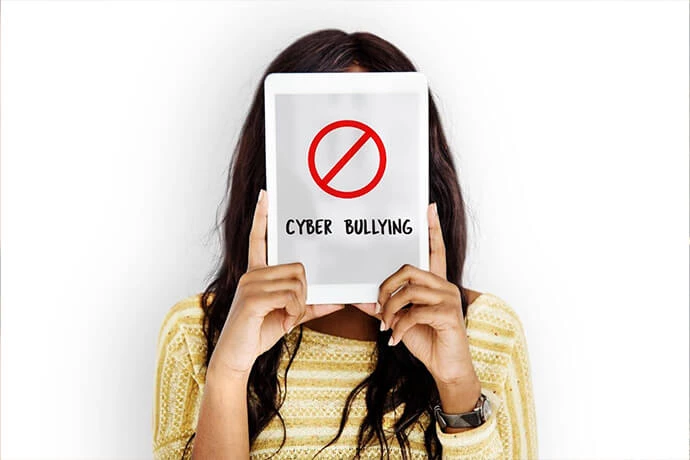 SPEAKERS
SPEAKERS
 TOPICS
TOPICS
Cyberbullying, unfamiliar to many parents, thrives in the internet's anonymous, instant, and widespread platform, amplifying emotional harm.

Bullying is a longstanding social issue and has extended its reach into digital life. Despite common beliefs, it's not exclusive to the younger generation, and it hasn't escalated in severity online compared to offline. The surge in news coverage surrounding bullying, thanks to the prominence of social media, has stirred more awareness rather than an actual increase in incidents.
As a parent, the concept of cyberbullying may be unfamiliar. While traditional bullies still exist in classrooms and playgrounds, the landscape has evolved. Picture this: the internet offers an anonymous, instant, and widespread platform—ideal for bullies aiming to cause emotional harm.
However, you have the power to combat this new and dangerous form of bullying.
Cyberbullying is when technology becomes a tool for harassment, threats, embarrassment, or targeting others. It unfolds on devices like smartphones, computers, tablets, and gaming systems. This digital aggression inflicts harm on individuals and, in certain cases, violates the law.
Experts commonly view bullying and cyberbullying as serious, often targeted, and repetitive acts. In the realm of cyberbullying, the repetition may lack a personal touch but remains hurtful, especially when widely shared or even viral, often by anonymous contributors.
Both forms typically involve a power imbalance, whether physical, psychological, or social. While cyberbullying unfolds in digital spaces with potential anonymity, it typically has a connection to offline life, particularly in the context of kids and their school experiences.
To ward off cyberbullying and related issues like catfishing, instill in your child the importance of using passwords across the board. Passwords stand as a powerful shield for safeguarding both accounts and devices.
Make it clear to your child that sharing passwords is a big no-no, even with their closest friend. Trust is vital, but friendships can change, and there's no certainty they'll be buddies forever. Keep those passwords under wraps for a secure online experience. Our speakers like Ben Owen, or Cassie Kozyrkov talks about those topics.

While not every situation reaches this extreme, cyberbullies and harassers can potentially exploit your details and passwords. That's why it's crucial to take simple steps to protect your passwords, especially if you're frequently online.
Consider using password managers for a convenient and secure storage solution. However, keep in mind that they face similar risks as individual logins. Another effective method is the old-fashioned way: jotting down your passwords on paper.
Add an extra layer of security by using hints in your notes instead of the full passwords. Make sure to use distinct passwords for different logins adds an extra shield of protection.
In the face of cyberbullying, taking matters into your own hands can escalate the situation and isn't the safest route. Even a seemingly harmless response can pull you deeper into a negative scenario.
Our advice: Skip the response and opt for other strategies from the list we've shared. Dealing with casual negativity may not always be a breeze, but there are non-confrontational approaches that can help minimize your risk and exposure to cyberbullying.
Cyberbullying might not always neatly fit into site guidelines, but some bullies go beyond the bounds of standard user agreements. In such cases, gather your evidence and report the user to site admins. Following that, take a step further by blocking the harasser or adjusting your privacy settings to ensure your safety on that platform.
Keep in mind that not every platform provides the same level of protection. If you can't find a way to flag abuse, check for a "contact us" page to report the issue directly. It's all about taking proactive steps to create a safer online environment for yourself.

Smartphones offer the option to share your location with friends, allowing them to know where you are at all times. Have a conversation with your child about the importance of choosing who they share their location with or whether they should share it at all.
Be aware that some photos taken with smartphones come with geotags, revealing where the photo was taken. Even without explicitly mentioning the location, these photos can disclose your child's whereabouts.
Encourage your child to be mindful of the photos they share and when they share them. For instance, it might be wise to hold off on posting vacation pictures until you've returned home. This simple step helps safeguard your privacy by not broadcasting that your home is unoccupied for an extended period. Taking control of location sharing is a proactive measure in creating a secure online environment for your child.
Let's dive into some eye-opening cyber bullying statistics:
Hope this helped you. If you want to create awareness of cyberbullying get in touch with us!